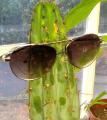
DMT-Nexus member
Posts: 2151 Joined: 23-Nov-2012 Last visit: 07-Mar-2017
|
I've read in a couple of places that Muscinol-containing mushrooms grow quite famously on the Isle of Patos, where John is said to have written the Book Of Revelation. Not trying to start anything, but it seemed like an appropriate fun fact, given the topic. Speaking from experience, these are a really interesting trip. For me it was nothing like a psilocybin journey, but rather, more like a really euphoric fever dream. Definitely worth repeating the experience, but it's probably not for everyone. "There are many paths up the same mountain."
|
|
|
|
|

DMT-Nexus member
Posts: 417 Joined: 03-Jan-2012 Last visit: 24-Jan-2019
|
https://www.dmt-nexus.me...aspx?g=posts&t=44137I put this in the open discussion and hasnt had much feedback! I thought I might place it here, dealing with the appropriate subject matter. The Unknown = A Place to Learn
|
|
|

DMT-Nexus member
Posts: 1310 Joined: 27-Sep-2012 Last visit: 01-Feb-2022 Location: Lost in space
|
Does anyone have any tips for hunting these red beauties? I posted here last year, and got skunked looking for them. I've upped my game this year, but still not found the first freakin amanita!!! So I was wondering, do they like: shade brush water (running, still, none) spruce pine alder oak maple fir sand hills grass sun cool temps ??? I am getting desperate here! I know they're out there! The season is waning! Everything I read says they grow starting in the second half of summer, but I don't know how they'd do that here, in Western Washington. It is usually very dry until fall, so how can they grow without rain? I really want to find some, because everywhere you go on the net they offer "A++ Washington" amanitas. Why should I buy them?! I live here!! This is mushroom heaven, and yet I can't find these damn things!! Rant complete, Thank you for any help! Be an adult only when necessary.
|
|
|

DMT-Nexus member
Posts: 3207 Joined: 19-Jul-2011 Last visit: 02-Jan-2023
|
look in forested areas, especially near lakes and ponds. i read they only like coniferous trees, but they prefer birch to spruce, and birch is deciduous. so birch and conifers, mostly. partly shaded areas, near the base of trees. can be kinda hard to spot at first, especially the small ones covered in the veil. also many people get them in their yards, and mistakenly believe them poisonous and a pest. so they would gladly let you harvest them with permission (if you can find a neighborhood inhabited with amanitas). My wind instrument is the bong
CHANGA IN THE BONGA!
樹
|
|
|

DMT-Nexus member
Posts: 1075 Joined: 01-Sep-2010 Last visit: 12-Aug-2019 Location: Out here
|
It seems kind of random where they grow imo, i used to look around trees etc but this year ive found most by trails.
Have collected about 200g dried so i will try all kinds of different teks and methods of ingestion.
|
|
|

DMT-Nexus member
Posts: 3207 Joined: 19-Jul-2011 Last visit: 02-Jan-2023
|
SHroomtroll wrote:It seems kind of random where they grow imo, i used to look around trees etc but this year ive found most by trails. interesting.. 100% of the ones i found were at the base of a tree (or very close to it, 2 feet away at the most) My wind instrument is the bong
CHANGA IN THE BONGA!
樹
|
|
|

DMT-Nexus member
Posts: 1310 Joined: 27-Sep-2012 Last visit: 01-Feb-2022 Location: Lost in space
|
Thanks guys! I'll see what I can do. I hope I can find some of these babies... Be an adult only when necessary.
|
|
|

लीला
Posts: 152 Joined: 12-Dec-2012 Last visit: 03-Dec-2013 Location: بابل
|
If your finding them away from trees please be sure your not picking these mushrooms known as "the sickener" http://en.wikipedia.org/wiki/Russula_emetica “Music is the voice of God traveling through ten-dimensional hyperspace.”
― Michio Kaku
|
|
|

DMT-Nexus member
Posts: 48 Joined: 17-Feb-2009 Last visit: 11-Oct-2015 Location: midwest
|
I can say that when Amanitas fruit depends much on the local microclimate (temperature, moisture, altitude). For example, the last week of August I was traveling around the mountains of western Colorado and Amanitas quickly became the theme of the trip! I assume they fruit significantly later at lower/warmer altitudes but I was finding them like crazy in the mixed coniferous/aspen forests between 2000-3000 meters at that time.
They appeared almost exclusively within sight of human trails, almost as if wanting to be noticed. I found them under trees, as well as in more open and grassy areas. Oddly, I found almost none deep in the woods away from trails. Something else I learned is that Amanitas are somewhat associated with the tasty Porcini mushroom and they are often found in close proximity to each other.
It has been almost 10 years since I last ate Amanitas, but having recently dried out these I found makes me consider giving them another go once again...I plan to heat them in the oven at ~80-90C for 20-30 minutes before sampling. My understanding is that this temperature will effectively decarboxylate the neurotoxic ibotenic acid into the more desirable and psychoactive muscimol.
|
|
|

DMT-Nexus member
Posts: 48 Joined: 17-Feb-2009 Last visit: 11-Oct-2015 Location: midwest
|
I can say that when Amanitas fruit depends much on the local microclimate (temperature, moisture, altitude). For example, the last week of August I was traveling around the mountains of western Colorado and Amanitas quickly became the theme of the trip! I assume they fruit significantly later at lower/warmer altitudes but I was finding them like crazy in the mixed coniferous/aspen forests between 2000-3000 meters at that time.
They appeared almost exclusively within sight of human trails, almost as if wanting to be noticed. I found them under trees, as well as in more open and grassy areas. Oddly, I found almost none deep in the woods away from trails. Something else I learned is that Amanitas are somewhat associated with the tasty Porcini mushroom and they are often found in close proximity to each other.
It has been almost 10 years since I last ate Amanitas, but having recently dried out these I found makes me consider giving them another go once again...I plan to heat them in the oven at ~80-90C for 20-30 minutes before sampling. My understanding is that this temperature will effectively decarboxylate the neurotoxic ibotenic acid into the more desirable and psychoactive muscimol.
PS..The large, brown mushroom is a Porcini
|
|
|

DMT-Nexus member
Posts: 48 Joined: 17-Feb-2009 Last visit: 11-Oct-2015 Location: midwest
|
Oops here are the pics Mill attached the following image(s):  IMG_1379.jpg (2,728kb) downloaded 232 time(s). IMG_1486.jpg (3,293kb) downloaded 230 time(s). IMG_1389.jpg (3,541kb) downloaded 231 time(s).
|
|
|

DMT-Nexus member
Posts: 48 Joined: 17-Feb-2009 Last visit: 11-Oct-2015 Location: midwest
|
There seems to be a discrepancy in the ideal temperature to dry/decarboxylate...now I'm curious if the temps we are speaking of have any significant effect on the ibotenic acid/muscimol ratio. If the melting point of ibotenic acid is ~150C, it seems very unlikely that it would be decarboxylated at temps less than 100C, b/c if so it would effectively be turned into muscimol at a temp less than its melting point...which doesn't add up. Any additional relevant info would be much appreciated.
|
|
|

DMT-Nexus member
Posts: 3207 Joined: 19-Jul-2011 Last visit: 02-Jan-2023
|
imo oven-heating doesn't work nearly as well as good-old fashioned sun-drying. from what i understand ibotenic can be decarboxylated at low temperature just from oxidation. so while heat may catalyze this process, it certainly isn't necessary, and as such, it doesn't need to be higher than the melting point of ibotenic. and UV light converts ibotenic into muscazone. as for the chemistry behind it, i haven't a clue, but i would assume it to be a different process than decarboxylating cannabinoids (which do not become active when sun-dried). My wind instrument is the bong
CHANGA IN THE BONGA!
樹
|
|
|

DMT-Nexus member
Posts: 48 Joined: 17-Feb-2009 Last visit: 11-Oct-2015 Location: midwest
|
Interesting, I could imagine general oxidation doing the trick over time but would think heat would be a more sure way to encourage decarboxylation. I like the idea of sun drying but there seems to be little information on muscazone pharmacology other than its supposed toxicity, so I'm hesitant to do anything that might increase its concentration...call me paranoid. Maybe I'll let the rest of what I have sit in the sun now that they're dry.
In other news, last night I decided to cook with ~4g of the Amanitas I collected over a month ago in Colorado. They've been drying at room temp for all this time so I figured I didn't have to worry much given the relatively small amount and the fact that I was cooking them with my salmon and quinoa.
Thanks to both Erase and Entropymancer for their thorough write-ups on Amanita preparation. I will say that yea they are really tasty and rich in flavor. Only wish I collected more now that I realize their edible potential! As far as effects, the 4g consumed with food didn't do anything powerful to write home about. That said, I did notice a pleasant relaxation and a certain altered body awareness. Probably the most interesting thing was that I experienced vivid and memorable dreams. Could have been coincidence but I think there was a correlation for sure. I'll likely experiment cooking with 10-12g sometime soon.
Thanks again everyone
|
|
|

DMT-Nexus member
Posts: 1310 Joined: 27-Sep-2012 Last visit: 01-Feb-2022 Location: Lost in space
|
I found some!!!! Oh man, I've been dreaming about them. I had a dream last night that I found a bunch, actually. This year, and last I went to parks, the woods, the ocean coast, and nothing. I noticed a birch tree on campus with many off-white round orbs under it from about 100 yards away. Sure enough! Some orangey bastards!! Just to be sure, here's a few pics. They are fairly immature, which is why I only picked 2. There are a tin more, that I am hoping will be spared from the lawn mower. I'll go back in a few days to gather the rest. It is somewhat hard to tell if there is in fact "fuzzy concentric rings" at the base, but it looks good to me. Plus, it is unlikely there would be such a convincing look-alike in Washington state, but I want to be cautious just the same. Mr.Peabody attached the following image(s):  IMAG0581.jpg (1,872kb) downloaded 182 time(s).Be an adult only when necessary.
|
|
|

DMT-Nexus member
Posts: 1310 Joined: 27-Sep-2012 Last visit: 01-Feb-2022 Location: Lost in space
|
Hey!! So the two shroomiez in the picture I put up have done something strange. They kept growing!! It must be some kind of cool trick of evolution. It makes sense, since if they can make a last-ditch effort to drop spores after being up-rooted, they are more likely to reproduce. I'm thinking that large ball at the base is used for storing energy. As you can see, the stem became bent from the mushroom laying on its side, but it is longer overall, and the cap is much more open than yesterday. Again, I'd appreciate a confirmation that this is the right mushroom from someone with experience in these. Thanks!! Mr.Peabody attached the following image(s):  IMAG0582.jpg (1,742kb) downloaded 172 time(s).Be an adult only when necessary.
|
|
|

Who are you?
Posts: 96 Joined: 27-Mar-2013 Last visit: 02-Nov-2025 Location: Nonexistence
|
Mr.Peabody wrote:Hey!!
So the two shroomiez in the picture I put up have done something strange. They kept growing!! It must be some kind of cool trick of evolution. It makes sense, since if they can make a last-ditch effort to drop spores after being up-rooted, they are more likely to reproduce. I'm thinking that large ball at the base is used for storing energy.
As you can see, the stem became bent from the mushroom laying on its side, but it is longer overall, and the cap is much more open than yesterday.
Again, I'd appreciate a confirmation that this is the right mushroom from someone with experience in these.
Thanks!! Definitely Amanita Muscaria, no doubt. I've hunted them 3 years in a row and have found that the color of the cap can range from a dark red to a pale orange/yellow, presumably depending on how much rain the mushroom has been exposed to.
|
|
|

DMT-Nexus member
Posts: 628 Joined: 12-Jan-2010 Last visit: 28-Feb-2019
|
Quote:Definitely Amanita Muscaria, no doubt.
I've hunted them 3 years in a row and have found that the color of the cap can range from a dark red to a pale orange/yellow, presumably depending on how much rain the mushroom has been exposed to. I see the Amanita's everywhere I go in the woods these days. I have indeed seen some which are very red and others which are pailer (orange, yellowish even). I don't know if this is true, but I have heard it is best to pick only the real red ones? Any truth in this? And another question, are there different types of Amanita Muscaria? There seems to be a lot of confusion in my circles about this mushroom. I saw this beauty today in the woods: Elpo attached the following image(s):  2013-10-12 16.57.16.jpg (2,762kb) downloaded 153 time(s)."It permits you to see, more clearly than our perishing mortal eye can see, vistas beyond the horizons of this life, to travel backwards and forwards in time, to enter other planes of existence, even (as the Indians say) to know God." R. Gordon Wasson
|
|
|

DMT-Nexus member
Posts: 230 Joined: 12-Apr-2010 Last visit: 08-May-2019
|
^ the golden/orange ones are a variety of A. muscaria, known as 'Amanita muscaria var. formosa'.
|
|
|

DMT-Nexus member
Posts: 3207 Joined: 19-Jul-2011 Last visit: 02-Jan-2023
|
imo that is muscaria var. muscaria. can get kinda yellowy from time to time (sometimes you will see yellow-ish var.muscaria right next to its compatriots/family which are deep crimson. whereas var.formosa tends to be extremely yellow/gold without nearly as much red/orange (which isn't to say there is none) like in the pic Parshvik Chintan attached the following image(s):  amanita formosa.png (5,526kb) downloaded 138 time(s).My wind instrument is the bong
CHANGA IN THE BONGA!
樹
|